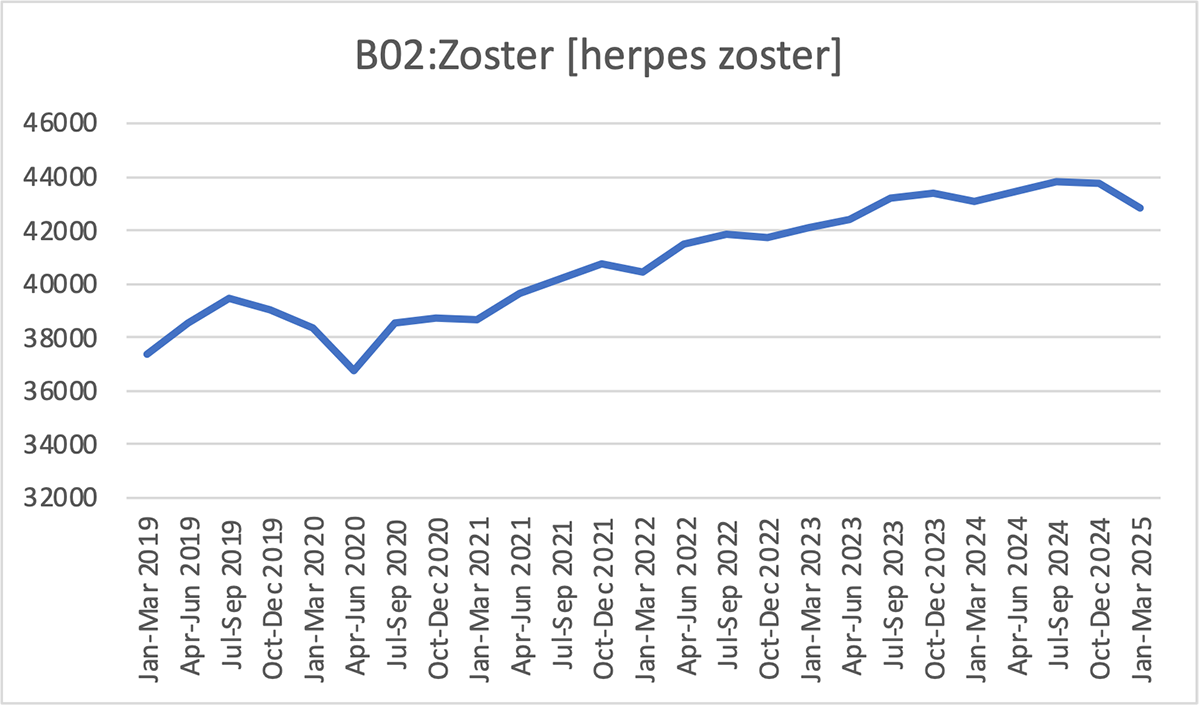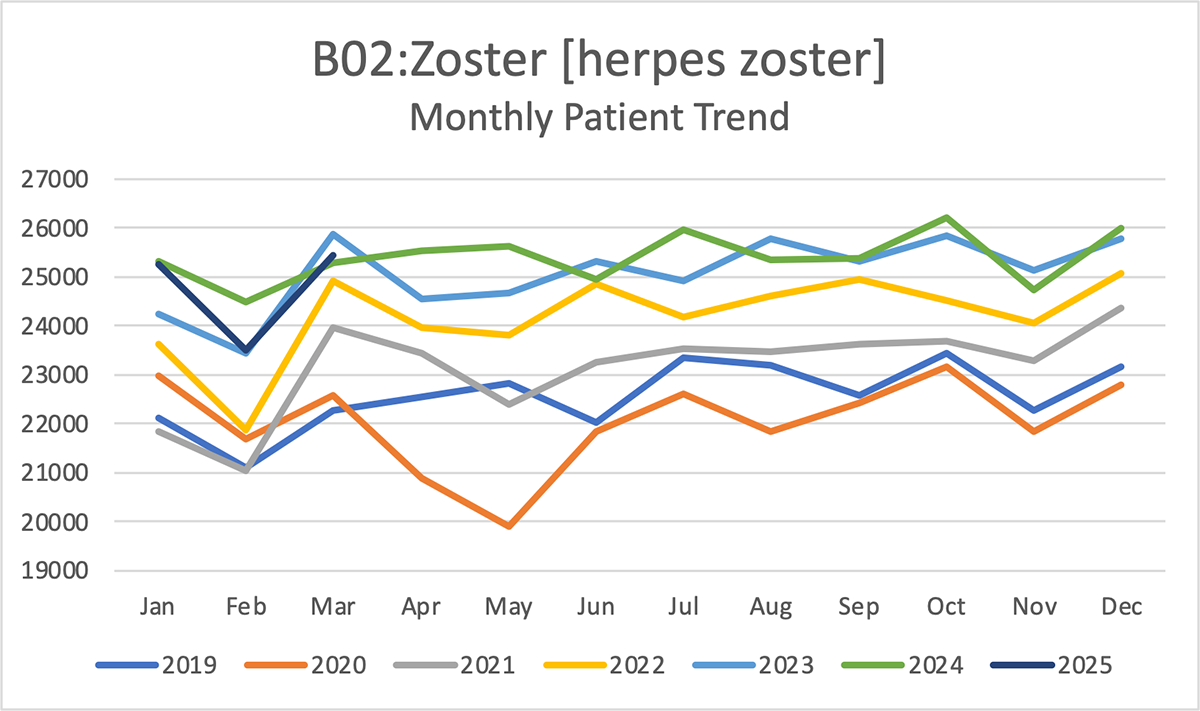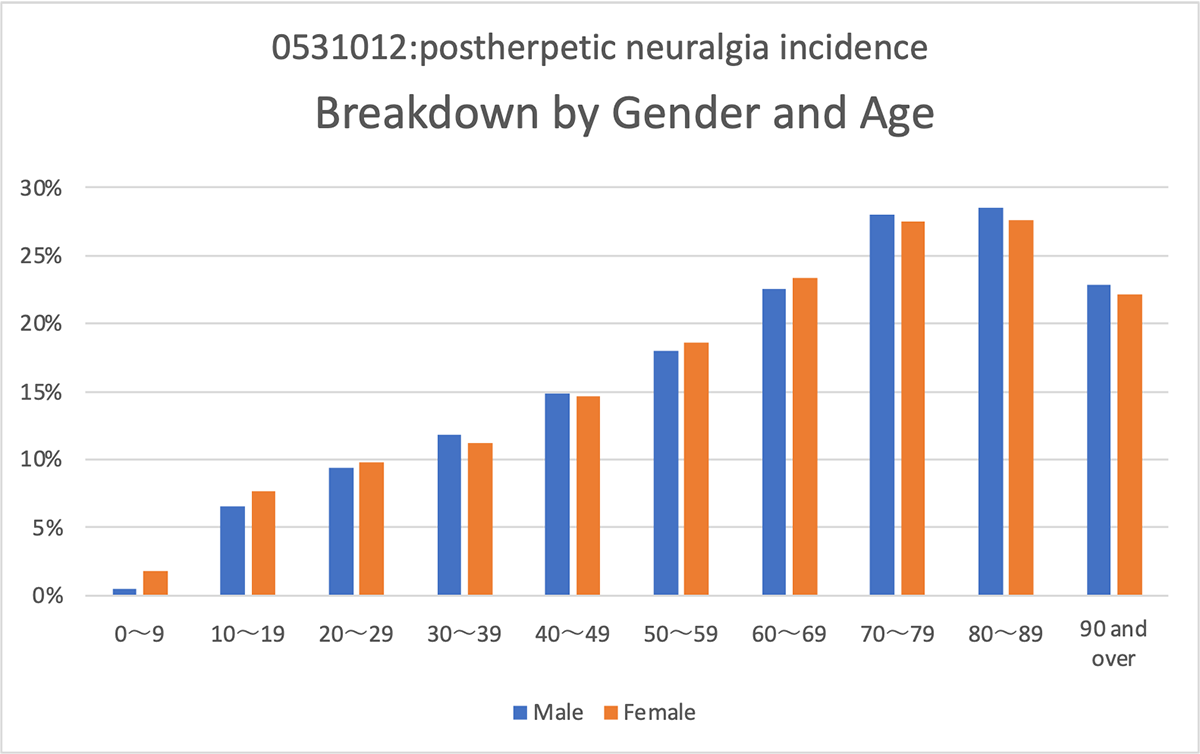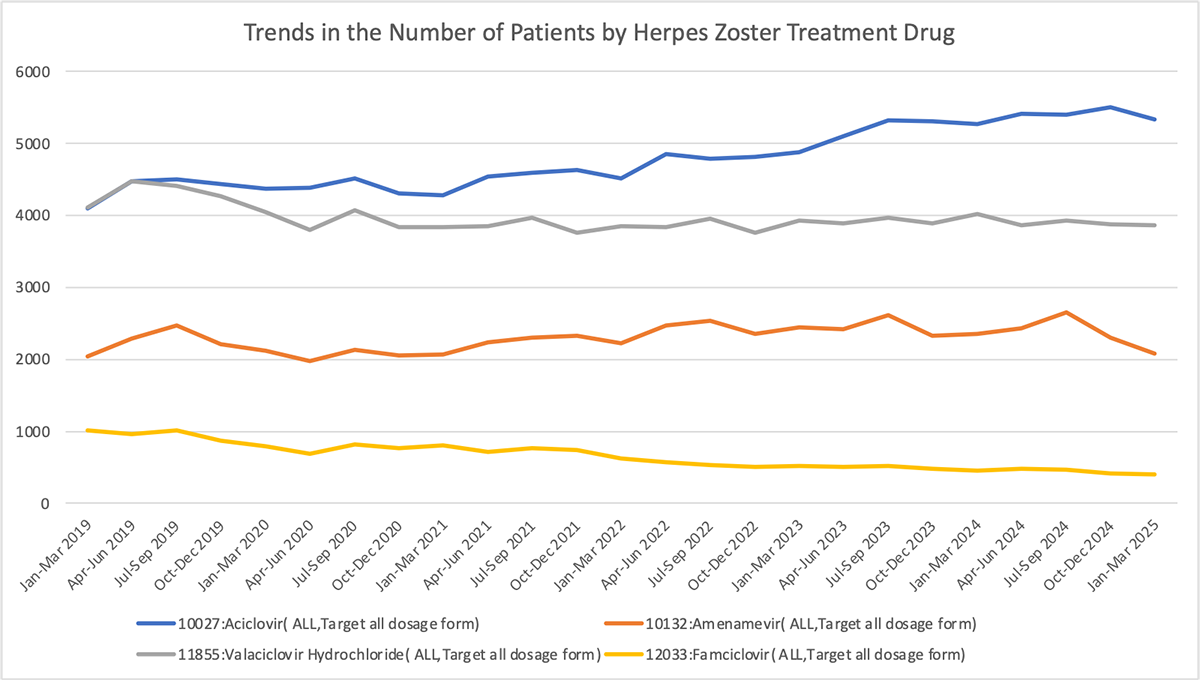News
Analysis of Patient Trends Using Big Data Reveals Seasonal Surge in Herpes Zoster Cases Beginning in July
- July 16, 2025
Medical Data Vision Co., Ltd. (Head Office: Chiyoda-ku, Tokyo; President & CEO: Hiroyuki Iwasaki), which operates one of Japan’s largest medical databases, has conducted an analysis of patient data related to Herpes zoster (also known as shingles).
The dataset spans from January 2019 to March 2025, covering 317 medical institutions nationwide, providing a comprehensive overview of Herpes Zoster trends in Japan.
A national routine vaccination program for Herpes Zoster began in April 2025. The program is primarily targeted at elderly individuals aged 65 and older, who can choose between a live vaccine and an inactivated vaccine.
Herpes Zoster is usually caused by the varicella-zoster virus, which commonly infects individuals during childhood. Even after recovering from chickenpox, the virus remains dormant in the body’s nerve ganglia. When the immune system is weakened due to aging, fatigue, or stress, the virus can reactivate and lead to the onset of Herpes Zoster.
The incidence rate increases from around the 50s, and it is said that about one in three people will develop Herpes Zoster by the age of 80. When it occurs, red rashes and blisters appear along the skin’s nerves and are accompanied by severe pain.
Symptoms mainly appear on the chest, back, and upper limbs, but they can also affect the face and neck. While most people recover from skin symptoms and pain within 2 to 4 weeks, in some cases where nerve damage remains, pain can persist for several months to years.
Using MDV’s data, we analyzed trends in the number of Herpes Zoster patients (overall and by month), the distribution of patients by gender and age group, and the number of patients by treatment type over time.
Although a temporary decline in the number of patients was observed in 2020 due to reduced medical visits amid the COVID-19 pandemic, the graph shows a subsequent upward trend in patient numbers.


When examined in detail by month, the number of patients tends to decrease every February, followed by an increase from March through early spring. Additionally, there is a tendency for patient numbers to rise from July to October, indicating a seasonal pattern of increased onset from summer to autumn.
This may be related to changes in temperature and humidity, accumulation of fatigue during summer, and a decline in immune function. On the other hand, from November through January of the following year, the number of patients remains relatively flat or shows a slight decreasing trend.
By gender and age group, the number of patients tends to increase with age, with the highest number observed in those in their 70s. Although there is little difference between men and women, the number of female patients is slightly higher.
Incidence Rate of Postherpetic Neuralgia
The incidence rate of postherpetic neuralgia showed a tendency to increase with age. In particular, individuals in their 80s had the highest incidence rate. Regarding gender differences, males showed a slightly higher incidence rate overall.


Lastly, we examined the trends in the number of patients using medications for Herpes Zoster treatment.
Acyclovir was found to be the most commonly used drug, followed by famciclovir hydrochloride.
Overall, the usage of each medication has remained relatively stable without significant fluctuations. However, acyclovir has shown a slight upward trend since 2021.
Physician’s Comment
Dr. Shoko Ito : Department of Dermatology, Tojun Hospital Jiseikai Social Medical Corporation (Adachi-ku, Tokyo)
Herpes Zoster is caused by the varicella (chickenpox) virus from a past infection.
For this reason, a blood test at the initial visit is not helpful in making a diagnosis, as patients already have antibodies from their previous infection.
In some cases, testing at a later time may show a rise in antibody levels that can help confirm the diagnosis. However, since early administration of antiviral medication is more effective in preventing complications, blood tests are generally not performed.

Recently, test kits have become available that allow for a definitive diagnosis by collecting fluid from the blisters (skin lesions).
Herpes Zoster typically presents as a band-like rash on either the left or right side of the body. In standard dermatological practice, diagnosis is usually based on the presence of a rash and patient interviews regarding the location and extent of pain.
For example, even if the rash appears around the upper arm, the pain may extend all the way to the fingertips.
The complication known as postherpetic neuralgia usually improves within about three weeks, but in some cases, the pain can persist for a longer period. In such instances, long-term management and patience are required.